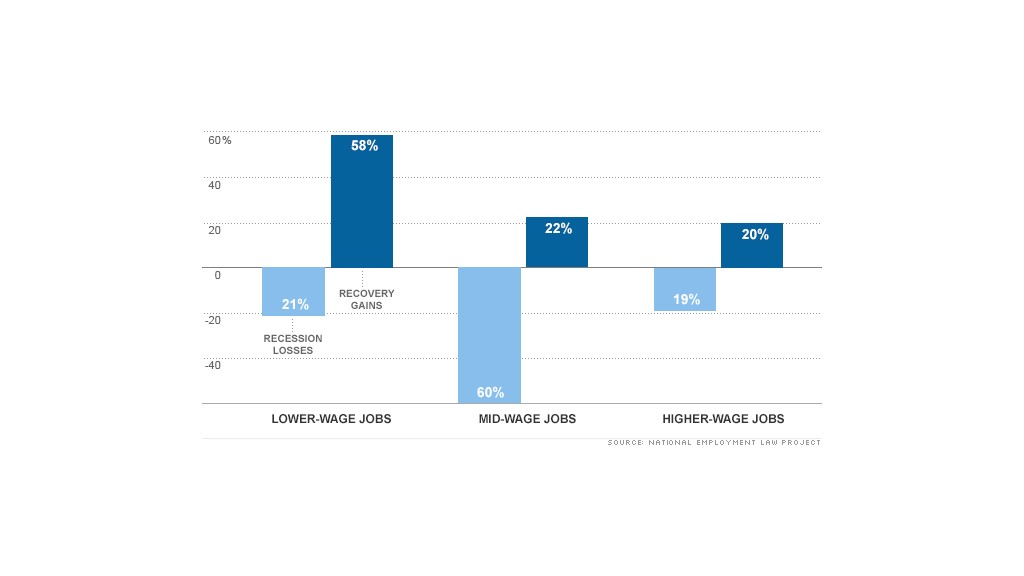
Sure, the economy is adding jobs these days...but most of those positions pay pretty poorly.
Some 58% of the jobs created during the recovery have been low-wage positions, according to a new report by the National Employment Law Project. Only 22% have been mid-wage jobs and 20% higher-wage positions. These low-wage jobs pay $13.83 an hour or less.
"The recovery continues to be skewed toward low-wage jobs, reinforcing the rise in inequality and America's deficit of good jobs," said Annette Bernhardt, NELP's policy co-director. "While there's understandably a lot of focus on getting employment back to pre-recession levels, the quality of jobs is rapidly emerging as a second front in the struggling recovery."
The explosion in low-wage job growth comes after the Great Recession hammered the mid-wage job sector. Some 60% of the jobs lost during the downturn were mid-wage, as opposed to 21% of low-wage and 19% of higher-wage positions.
The fastest growing low-wage jobs include retail salespeople, food prep workers, laborers and freight workers, waiters and waitresses, personal and home care aides, office clerks and customers representatives.

Employment in low-wage jobs has been expanding since the start of the century, rising 8.7% since the beginning of 2001. Mid-wage employment, meanwhile, dropped 7.3%. High-wage staffing rose by 6.6%.
"The economy has fewer good jobs now than it did at the start of the 21st century," said Bernhardt.
NELP looked at employment trends in 366 occupations between 2008 and 2012. Low-wage jobs had median hourly wages between $7.69 to $13.83, while people in mid-wage positions earned between $13.84 and $21.13. High-wage jobs had a median hourly wage of $21.14 to $54.55.
Related: America's workers: A year of ups and downs
The NELP study backs up a separate report from the Department of Labor that showed more than half of displaced workers who lost their jobs during the recovery and found new ones were working for lower wages.
Only 46% of these re-employed, full-time workers were earning as much as they did at the jobs they lost. About one-third reported taking a pay cut of 20% or more.
The Labor Department looked at workers who had lost their jobs from 2009 through 2011 because their plant or company moved or closed, there wasn't enough work for them to do or their shift was abolished. They had to have been working at the job for at least three years.


